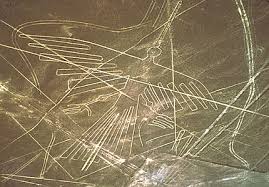Peru, the cradle of great cultures
Peru is a country rich
in history, which is not limited only to the Inca culture or pre-Inca cultures.
It has a very remote past competing in antiquity and complexity with other
peoples.
To start, I only briefly
mention the most important cases, which will then be presented more fully on
these deliveries. I'll start with cultures of the Peruvian coast.
Caral was the capital
of civilization, is located 182 kilometers north of Lima, 23 km from the coast
and 350 meters. He is credited with an antiquity of 5000 years and is
considered the oldest civilization in America. It is listed as a UNESCO World
Cultural Heritage Site, was a contemporary of other primitive civilizations
such as Egypt, India and Mesopotamia.
The Lord of Sipan was a former Mochica
ruler of the third century, whose tomb was discovered by Peruvian archaeologist
Walter Alva in 1987. This discovery was an important milestone in the
archeology of the Americas because, first, it was found intact and trackless
looting, a royal burial of a Peruvian civilization before the Incas. The wooden
coffin in which it was found, was the first of its kind to be found in America
and revealed the magnificence and majesty of the only ruler and warrior of
ancient Peru found to date of its discovery.
Chan Chan ("sun shining") is a pre-Columbian adobe city built on the
north coast of Peru by the Chimu. It is the largest city built in adobe of
America and the second in the world. It is located northwest of Trujillo, was
declared a World Heritage Site by Unesco in 1986, then included on the List of
World Heritage in danger in the same year. Chan Chan is formed by nine citadels
or small walled cities.
Pachacamac is
an archaeological site located on the right bank of the river Lurin, very close
to the Pacific Ocean in front of a group of islands of the same name, contains
the remains of several buildings, dating from the Early Intermediate (III
century AD) to the horizon Late (fifteenth century AD), where the buildings of
the best preserved Inca period (1450-1532 AD).
There was an ancient
oracle prehispanic basically built with adobe bricks, which the coast was place
of worship of the god Pachacamac, who was credited with the creation of the
universe and everything it contains.
The Nazca Lines are ancient geoglyphs found in the Pampas de Jumana in
the desert of Nazca; they were drawn by the Nazca culture and are composed of
several hundred figures ranging from as simple designs as lines to complex
zoomorphic, and geometric figures fitomorfas appearing drawn on the surface. Since
1994 lines and geoglyphs of Nasca and Pampas de Jumana are Humankind Heritage.
Paracas was an important
pre-Columbian civilization of Ancient Peru that developed in the peninsula of
Paracas, province of Pisco between 700 a. C. and 200 d. C. Most of the
information about the Paracas comes from archaeological excavations at Cerro
Colorado ("Paracas-Caves') and Warikayan (" Paracas-Necropolis
") by Peruvian archaeologist Julio C. Tello and Toribio Mejia disciple
Xesspe in the 1920s.
The Paracas practiced a
high-quality textiles, wool and cotton, as well as decorated pottery and
basketry elaborate. The Paracas culture is the predecessor of the Nazca culture
with which it has an obvious cultural affinity; for many specialists, the final
phase of Paracas is initial phase of the Nazca culture.
References
Caral
Señor de Sipán
Chan Chan
Pachacámac
Líneas de Nazca
Cultura paracas






























